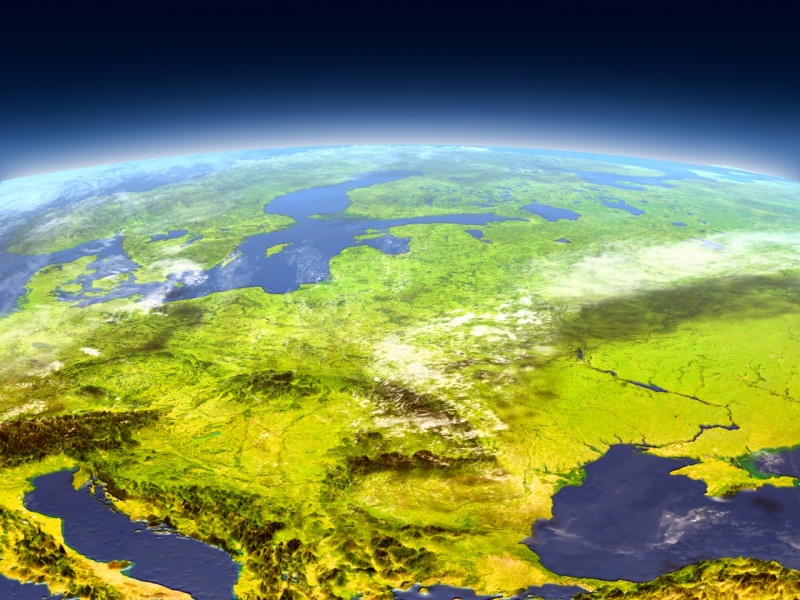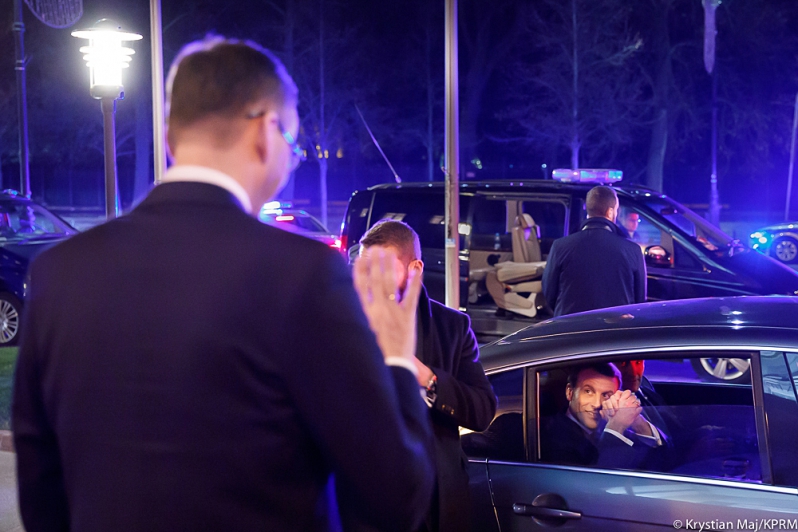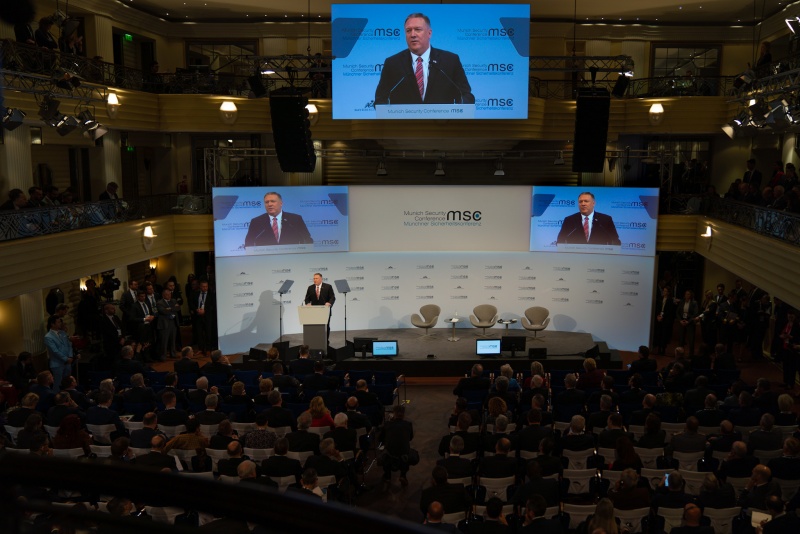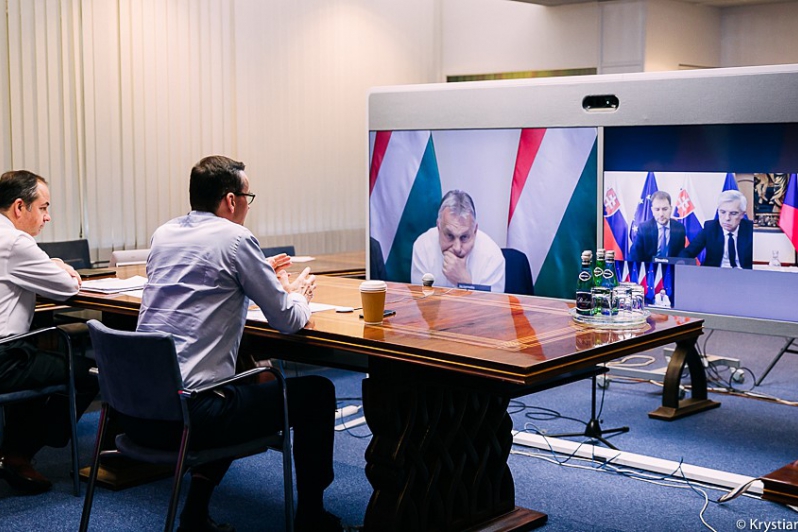
Central European Caleidoscope: How to Unite the Region in Times of Uncertainty
It is about filling the void.
For long, an intensive political discussion has been taking place over the future of Central Europe, and the Visegrád cooperation. Politicians and experts address this issue differently throughout the political spectrum, but there is a common aspect of these approaches. The region is still changing, and there are external forces that are interested in either the demise of the region, or in letting the region become more important. There is a void in the region, and chances are it might expand, causing rifts and fragmentation.
One of the first questions is a simple one, what is Central Europe (CE)? Here, for the sake of simplicity, let’s define this region for now as a geographical one located in between Germany and Russia.
A fragmented region with internal divisions
As a result of different memberships in international institutions, an “internal rift” exists between these countries, where EU and NATO membership constitutes the border. A divided Central Europe is exposed to external powers’ actions, let them be positive or negative.
Outside the NATO and EU umbrella that provides security for Central European states like the Baltic or the Visegrád states, countries experience being a part of a tug-of-war in which mostly the EU, Russia, the USA, and China are playing an important role. Milestones of these actions do not stop at the Russian annexation of Crimea, or at the continuous armed conflict in Eastern Ukraine in which the civilian casualties still grow, but extend to Belarus getting cozier with Chinese businesses and the military, or to Washington’s decision to reopen its embassy in Minsk.
In countries where NATO and the EU provides a security umbrella, the landscape is also changing, posing continuous challenges. Baltic and Visegrád states have also been exposed to Chinese and Russian economic and political influence, and (in some cases) to intra-EU debates that boil down to institutional powers and responsibilities.
History repeating itself: power changes affecting Central Europe
Concerning the EU and Central Europe, Brexit lies in the core of these challenges. The UK leaving the EU left some Central European countries without an ally that was keen on standing up against the French and German axis. As a result, French foreign policy activity has increased: with the aim to fill the void London caused, French President Macron went “on tour” to have his plan laid out, and to look for new allies he would be able to use to counter Berlin inside the EU. This is a honeytrap for CE: no matter how hard it is to work together with such a Germany that has numerous internal political problems (that mostly boil down to the unsolved matter of Chancellor Merkel’s long due succession) and has opposed CE initiatives (such as not forfeiting to the compulsory relocation scheme), Germany is the key for the political and economic stability of Central Europe. Berlin is still the main trading partner for the whole region.

E.Macron's visit in Warsaw
Throughout history, Central European countries did not cope that well with rapid international transformation caused by the shifts in balance of powers. (The Polish statelessness between 1795 and 1918 constitutes the most drastic example of this.) After Brexit, a similar situation appears. The UK is out from the EU, leaving a weakened Western Europe behind that is internally struggling how to fill this void. Western Europe meets a fragmented CE region whose main advantage lies in (more) stable governance, but consists of countries that are less developed compared to their Western counterparts.
Uncle Sam pointing at the map

A lecture by Mike Pompeo in Paris
On the other side of the Atlantic, a readjusted and conservative foreign policy has put back the Central European region on the map of U.S. policy-makers. Since 2017, however, not many of the plans have borne fruit, although programs like the Three Seas Initiative are gradually growing in importance. This is a great success for Polish foreign policy as well. Warsaw understood it in the perfect moment that a new regional framework can be beneficial for the whole region, and opted for stepping up. Polish foreign policy however needs to understand that as the Initiative grows, so will Poland’s responsibilities in promoting and helping in turning it into a regional framework.
Unfortunately, the aforementioned security umbrella is not fully protecting Central Europe from Russian and Chinese malign influence. In light of the 2019 coronavirus pandemic, the Chinese Communist Party exercised a wide variety of its tools to be present and active in Central European countries as well. Besides sending medical equipment (that later on, in some cases, turned out to be faulty) and executing a communication offensive, Chinese companies like Huawei were also playing a part in the operation countering this pandemic.
Nowadays a lot of speculation surrounds the possible economic severity of COVID-19. EU and NATO officials have already warned that the unfurling situation presents opportunities for Chinese companies to strengthen their positions in the Western hemisphere (like they did following the 2008 economic recession). This economic component poses yet another challenge to Central Europe that tries to succeed in obtaining funds for developing the region further.
In 2020, pledging 1 billion USD under certain conditions, the U.S. has shown readiness to play a more active economic role in Central Europe, aiming at filling a void in the region that is a mixture of political and economic factors. This provides the region with a chance, but Central European countries must meet favorable actions like this American-provided with actions of their own. The region must take responsibility for its own future as well.
The Visegrad Group standing up to the challenges?
In this regard, an extra layer of responsibility is allocated towards the Visegrad Group (V4). This cooperation has been active in taking action that extended to Central European non-EU countries as Belarus, Ukraine, Moldova, and to Azerbaijan, Armenia, and Georgia (all six countries are members of the EU’s Eastern Partnership Programme).

This is the willingness that appeared in launching a new V4 initiative (V4 East Solidarity Programme), executing which the International Visegrad Fund (IVF) will be responsible. IVF, a V4-created institution is in a unique position to provide a bridge between Central Europe and the close neighborhood of the EU.
Nowadays only a few institutions exist that are linking Central European EU and non-EU members together. Their work is important, but hindered by financial and HR means. As the same threats are affecting the whole region, linking these two parts together seems more important than ever. With (political) help from Western partners, IVF can gain importance in the forthcoming years. IVF needs a clear roadmap to achieve this. July 2020 marks the beginning of a new Polish presidency of the V4, followed by a Hungarian one—providing an opportunity for Warsaw and Budapest to lay out plans for the IVF as well.
Foreign policy analyst Zsombor Zeöld holds an MA in Central and Eastern European Studies from the Jagiellonian University. As the current CEPA–HIF Andrássy Fellow in Washington D.C., his main research topic is the Three Seas Initiative.
